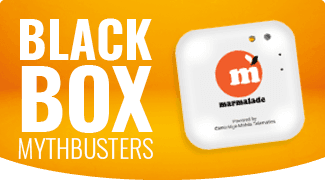Did you know that the DVSA publishes the driving test checklist that examiners use? To make things easy we’ve gone through and explained what examiners are looking out for. As with any test, knowing what you’ll be marked on can help you be better prepared!
So, let’s start from the top. This first section is for administration purposes. This includes personal details and a declaration that asks the candidate to confirm that they are insured to drive the vehicle they are doing the test in and that they have lived in the UK for 185 days in the past 12 months.
Below are several lists and categories. 27 of them to be precise (not including a couple of spares). These different categories cover the different faults that examiners are keeping an eye out for. Faults can be classed in 3 ways:
- An incident that causes danger to the candidate, the examiner, the public or property.
- An incident that is potentially dangerous.
- Driving behaviour that isn’t necessarily dangerous but if it happens frequently, could become dangerous.
The first 2 are considered major faults and will result in an immediate fail, but you often won't find this out until you have returned to the test centre at the end of your test. These are marked under S. The last one is considered a minor fault and is marked under D. The examiner will add up any faults there might be and the learner driver will pass their test if they have no more than 15 minors faults and no major faults.
>We’ll now take a closer look at faults can be picked up by the candidate. It is also important to remember that manoeuvring at an unsafe time or in an unsafe manner can get faults at any stage so you should always check your surroundings and focus on driving smoothly.
Eyesight
This section refers to the eyesight test the learner driver needs to take before the test can start. This test doesn’t require the candidate to visit the opticians, it simply requires the candidate to read a car licence plate from 20 meters away. You’ll notice this category only has a box for a mark under S. If they are not able to read the plate, the candidate will be marked with a major fault and the test will go no further.
Controlled stop
This is also known as an emergency stop and is done in every 1 in 3 tests. The examiner will tell the learner driver that when they give a signal, usually with a raise of the hand, they will need to stop quickly and safely while maintaining control of the car. They also look for the learner driver to move away safely after the stop.
Potential faults: Reacting slowly; not breaking hard enough; losing control.
Maneuvers
As it says on the tin, these sections cover four different manoeuvres. The learner driver will be asked to perform one of these on the test.
- Reverse/Right: This is commonly known as “pull up on the right”.
- Reverse park (road): This can be either reversing into a bay or parallel parking, on a road.
- Reverse park (car park): This can be either reversing into a bay or parallel parking, in a car park.
- Forward park: This refers to forward bay parking.
Potential faults: Stopping next to driveways, junctions or bends; not performing sufficient observations; not signaling the maneuver or signaling too late; needing to reposition the car; having wheels over the line of a parking spot.
Vehicle checks
This is for the 2 “show me, tell me” questions each candidate needs to complete. Minors can be picked up for an incorrect answer or a major for losing control of the vehicle. We’ve written a blog on the ‘show me’ and the ‘tell me’ questions you can read on the driver hub.
Precautions
When starting the car the candidate will need to do some routine checks. The examiner will be looking to see if the candidate has checked that:
- All the doors are shut
- The cars main controls can be operated safely (i.e. steering wheels and pedals)
- Mirrors are correctly adjusted
- Their seatbelt is on and not twisted
- If the handbrake is on
- That the car is in neutral. This could be park (P) or neutral (N) if driving an automatic.
Potential faults: Jumping the car (starting the engine in gear); rolling forwards or backwards when the handbrake is off; adjusting mirrors while moving; moving away with doors not shut; moving away with a twisted seatbelt.
Control
This section covers being able to safely control the pedals, parking brake and steering. The candidate needs to be able to show the examiner that they can use these smoothly and in a controlled manner. The candidate will need to be able to:
- Use both clutch and accelerator to pull away smoothly.
- Use the clutch when coming to a stop.
- Not coast with the clutch down or car in neutral.
- Brake smoothly.
- Use the parking brake to stop the car from rolling.
- Steer smoothly. Avoid swinging the car or crossing arms when turning.
Potential faults: Uncontrolled use of the accelerator, clutch or brakes; late use of the brakes; not using the parking brake correctly or when necessary; erratic steering; missing the turning point; bringing both hands off the wheel. Hitting the curb is also a fault, but it is only a major if the candidate mounts the curb or hits it hard. A small graze or ‘tap’ would only be classed as a minor.
Move off
This is more or less a combination of the last 2 sections. The candidate needs to make sure they have completed their precautionary checks, checked their blind spot and mirrors and can move off safely and smoothly.
Potential faults: Not completing one or more of the observations; not signalling correctly; not moving off smoothly.
Use of mirrors
MSM: mirror, signal, manoeuvre. This is something all learner drivers need to keep in mind when out on the roads. Candidates need to check thor mirrors before signalling, changing direction or changing speed.
Potential faults: Not using mirrors effectively when needed.
Signals
All the learner driver needs to do is signal correctly when it is necessary and in good time. This means that if they need to signal, it should be done in enough time to allow other road users to see what their intentions are.
Potential faults: Failure to give the necessary signal; giving a misleading signal; failure to cancel indicators; giving incorrectly timed signals that are too late or misleading.
Clearance/obstructions
Not everything on the road is moving, so if the candidate needs to pass something, they must make sure that plenty of room is left between the car and the obstruction. They also need to make sure that the pass is completed at a sensible speed and stop when it is needed.
Potential faults: Not leaving enough space when passing the obstruction; passing when it is not safe.
Response to signs/signals
Car indicators, road signs and road markings are a few of the signs and signals candidates need to keep their eyes peeled for.
Potential faults: Failure to react appropriately to signs; reacting too late.
Use of speed
This isn’t just about being aware of the speed limit, it is also about driving to the weather conditions and the road being driven. The amount of traffic can also affect the speed at which it is suitable to drive. The main thing to remember is that the car needs to be able to safely come to a stop.
Potential faults: Driving too fast for road, traffic or weather conditions.
Following distance
The golden rule to follow here is to stay 2 seconds behind the car in front when driving in good conditions. This changes to 4 seconds when it is wet.
Potential faults: Not keeping a safe distance from the vehicle in front while moving; not leaving a reasonable gap when stopping in traffic.
Progress
When thinking about the speed, it is just as important to make sure the car isn’t moving too slow as well as moving too fast. The learner driver needs to be moving at an ‘appropriate’ speed to ensure that other drivers aren’t encouraged to overtake, but at the same time, they can react to hazards in a safe and controlled manner.
Potential faults: Undue hesitation (such as not proceeding when it is safe to do so); waiting when it is reasonable to move off.
Junctions
At junctions, there are several things to consider, and because of this, it is one of the more common areas candidates fail their test. On their approach to the junction, learners need to carry out observations, get themselves in the right position, give any relevant signals to other road users and then perform the manuover safely.
Potential faults: Approaching at an inappropriate speed; not making effective observations; late or incorrect signaling and positioning; being too close or too far away from the kerb when turning left; cutting corners when turning right.
Judgement
This area is referring to the learner’s ability to assess their situation and decide on an appropriate course of action. This could be deciding to overtake a slow-moving vehicle or being prepared to wait to let an oncoming vehicle pass. When overtaking it is important to only do so when it is safe and while doing so a good amount of space needs to be left for the other vehicle or cyclist. When turning right, the candidate should not cut across the path of oncoming traffic, cause other road users to slow down, stop, or change direction.
Potential faults: Attempting an unsafe overtake; cutting in after an overtake; not showing appropriate judgement to oncoming traffic; turning across the path of oncoming road users.
Positioning
The learner driver needs to make sure they keep an appropriate position throughout the test. This means driving between the lines on a marked road.
Potential faults: Incorrectly moving across lanes at roundabouts; being in the wrong road position at unmarked roundabouts.
Pedestrian crossing
It isn’t just vehicles learner drivers need to be wary of. Pedestrians and cyclists need to cross roads and will use different types of crossings to do so. These are:
- Zebra crossings: Black and white striped crossing with a flashing yellow Belisha beacon on either side. Pedestrians have priority.
- Pelican Crossing: Stands for Pedestrian Light Controlled crossing and does exactly what they say on the tin.
- Puffin Crossing: Pedestrian User Friendly Intelligent crossing. Similar to Pelican crossings but use sensors to tell when they are clear or if there are people still crossing to determine when to change the lights. Also, they normally have signals for the pedestrians at eye level as opposed to the other side of the road.
- Toucan Crossing: Similar to Puffin, but are slightly wider so cyclists can use them as well.
- Pegasus/Equestrian Crossing: Designed for pedestrians and horses to cross together. Similar to Toucan crossings, but less common.
Potential faults: Not giving precedence to pedestrians using the crossing; not complying with the lights at the crossing.
Positional/ normal stops
It is common on tests for the examiner to ask the candidate to pull over and stop a number of times. They will check if the learner driver has done so in a safe, legal and convenient spot. The candidate needs to consider staying clear of bends and junctions as well as bus stops and other parked vehicles. Try to avoid lower kerbs or brows of hills and don’t forget that it is illegal to park within 10m of a junction, in a bus stop or a cycle lane.
Potential faults: Stopping in unsafe, illegal or inconvenient positions; unsafe or uncontrolled move away.
Awareness/planning
This is similar to judgement and looks at how the learner driver predicts the movements of other road users and reacts to these changes. They must be able to react to this in a good time and not just at the last second.
Potential faults: Slow reaction to other road users; not reacting to other road users; not planning an effective course of action.
Ancillary controls
These are the vehicle's wipers, air conditioning and other secondary controls. The examiner will check that the candidate can use these while keeping control of the vehicle.
Potential faults: Not keeping control of the vehicle while using ancillary controls; not using the correct ancillary control where needed.
Other sections
These are some sections that are not relevant to car driving tests, so you’ll be pleased to know you don’t need to worry about these for your car driving test. These are:
- H/Code / Safety: This is for special driving tests such as HGV or Tractors.
- Reverse / Left Reverse with Trailer: These manoeuvres do not form part of the car driving test.
- Turn in road: This is no longer part of the car practical test.
- Taxi wheelchair: This is for taxi drivers and involves using a wheelchair ramp.
- Uncouple/recouple: For tests where a trailer is used.
Eco Safe Driving
Although this section does not affect the result, the examiner will look at things such as heavy-breaking, over-revving and if the correct gear is selected. Feedback is given at the end of the test.
ETA - Examiner Took Action
This is as it sounds. If the examiner needs to take either verbal or physical action it will fall under this section. This doesn’t necessarily mean a fail, but it isn’t good.
Pass or Fail
The section that is arguably the most important of them all. If the candidate passes they will receive a pass certificate and they will need to sign the declaration stating there has been no change to their health since they last applied for a licence.
If the candidate fails, it is important to read through the mark sheet to spot what went wrong and what areas can be improved.
That is everything you might need to know about the mark sheet and what the candidate needs to consider for their test. The most important thing for any learner the candidate to remember is to remain calm and remember what they have learned in their lessons! Best of luck with your tests!







